Sony’s ANC hero of yesterday – now a mid-budget benchmark.
The advent of over USD$100 headphones into the minds of the general populace was largely spearheaded by the now-infamous Beats by Dre. Almost universally hated by the discerning listener, the celebrity headphone left two marks on the industry – they turned headphones into lifestyle items and showed the benefits of sticking miniaturized electronics into them.
- Hard to beat ANC quality for the money
- Little to disagree with the tuning
- Can be worn all day without discomfort
- Muted looks work well with most styles
- With smart shopping can be found under USD$150
- The sound won’t wow anyone
- Can get sweaty in hot temperatures
- Original pad availability unclear
- Battery life in 2023 considered only as okay
- ANC can get spooked by sudden pressure changes and wind
- Touch surface operation is a bit fiddly
- The built-in mic is pretty bad
Sony attempted to bring compelling lifestyle headphones to market at the same time as Beats. However, the peak of their success would come when they dethroned Bose as the reigning champion of the premium ANC niche.
The WH1000-series is now five generations old, a series that got good with the XM2 whilst the later XM3 built on their success. Let’s find out whether the two-generation-old flagship can still be a compelling offer today for the budget-conscious commuter or office listener.
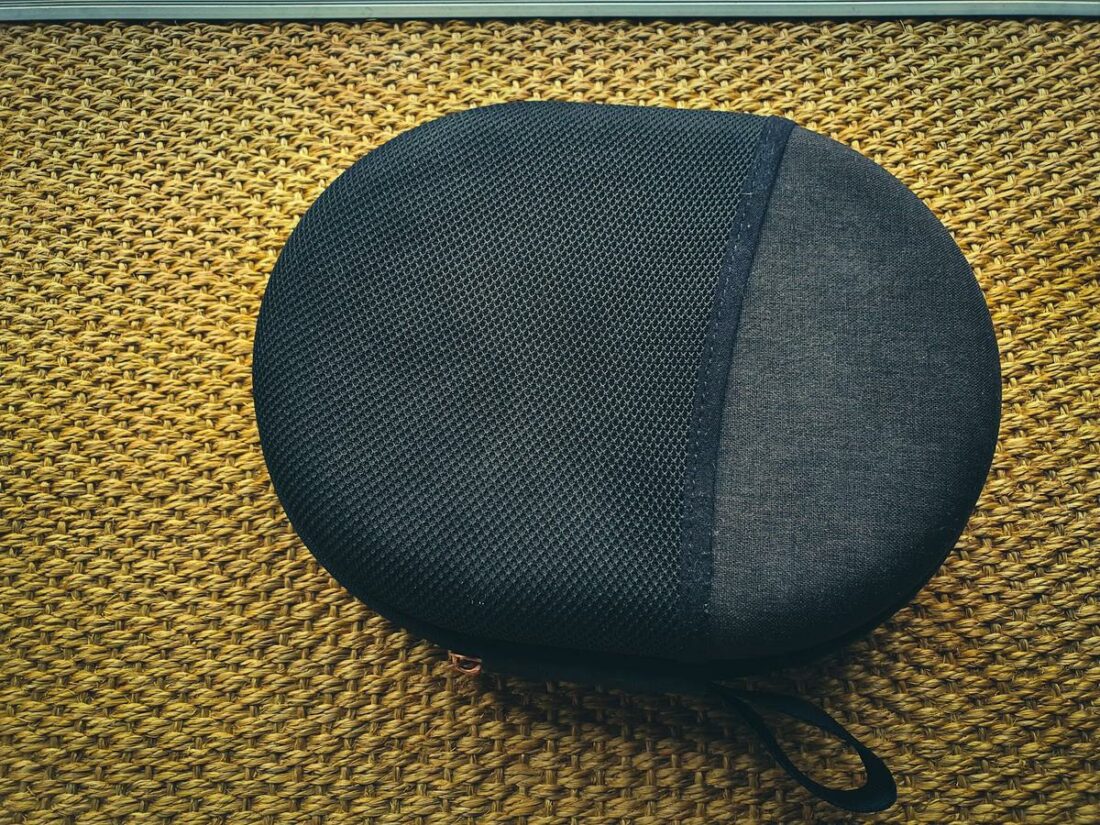
Technical Specifications
- Driver: 40mm, polymer
- Stated Frequency Response: 4 – 40 000Hz
- Connectivity: Bluetooth (AptX, LDAC, SBC, AAC), 3.5mm jack, USB-C charging
- Weight: 0.56lbs (254g)
- Cable: 1.2m, 3.5mm TRS terminations at both ends
- Battery: rated at 30h of listening, full charge in 2h with a fast charger
Packaging
The WH-1000XM3 come in a cardboard box that slides out of a glossy sleeve. In the box, one finds the carrying case which has both the headphones and all of the accessories inside.
In the box
- The WH-1000XM3 headphones
- Semi-hard carrying case
- 3.5mm to 3.5mm stereo cable
- USB-C to USB-C cable
- Old-style two jack airline adaptor
- Some paperwork
Design and Ergonomics
The WH-1000XM3 are visually understated and prefer to be heard, not felt or seen. As has been the case with almost all WH1000-series headphones, the light weight is a double-edged sword – it makes the headphones rather comfy to have on your head, yet it also makes them a bit cheap feeling when handled.
The plastic used for the earcups has a nice matte surface finish that doesn’t attract greasy fingerprints easily, and it also hides minor scuffs and scratches easily, so the headphones wear and tear more gracefully.
At the time, a pretty major departure was Sony’s idea to employ a touch surface on the right earcup instead of relying on physical buttons to implement the basic playback controls.
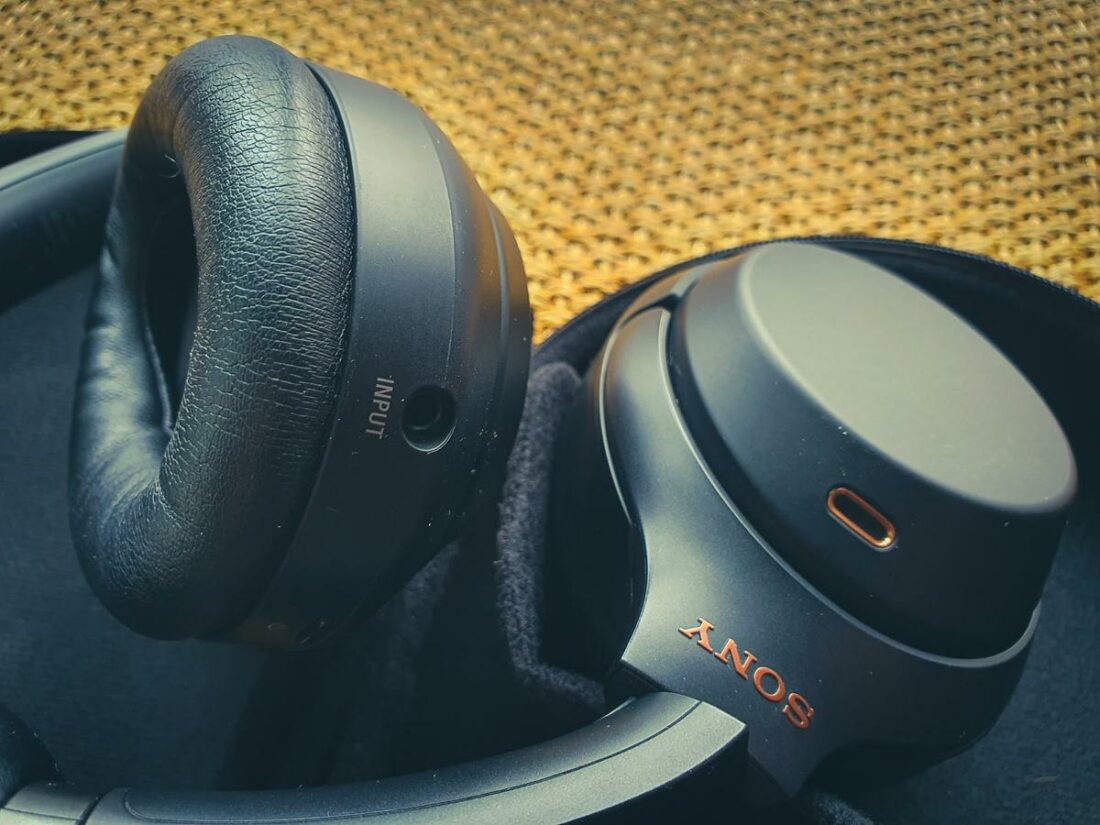
The touch surface is a hit-or-miss affair, which luckily lands more hits than it doesn’t. It works okay for a first-time implementation – taps and swipes register most of the time, if with a slight delay.
Unless it’s cold outside, that is.
Not only does cold weather force you to wear gloves, but it also seems to mess with the sensitivity of the touch surface, so I’d rather use my smartphone to change the volume or skip a song. Not a major issue; just don’t expect the responsiveness of a smartphone touchscreen.
The WH-1000XM3 have another trick up their sleeve, or rather – the earcup. If your phone has NFC reading capability, the left earcup can trigger a Bluetooth connection when you hold your phone against it. It’s my favorite way to start using the WH1000XM3 when I’m going out.
In terms of battery life, the WH-1000XM3 are decent, and Sony rates it as 30h. For me, they work fine for the whole workweek if I use them only during the commute or 3 days for heavy in-office listening. A full charge takes about 2 hours from a fast charger.
When using the USB cable to connect the WH-1000XM3 to a computer, it’ll charge them only; wired listening is possible only through the 3.5mm cable which is TRS only, so there’s no way to use the mic.
Comfort
In terms of general comfort and ergonomics, the XM1000-series have always been a win for Sony. As mentioned above, the weight is an absolute non-issue as it’s low and well-distributed. The WH-1000XM3 use a mix of clamping and headband cushion to stay on one’s head, with no hotspots developing over time.
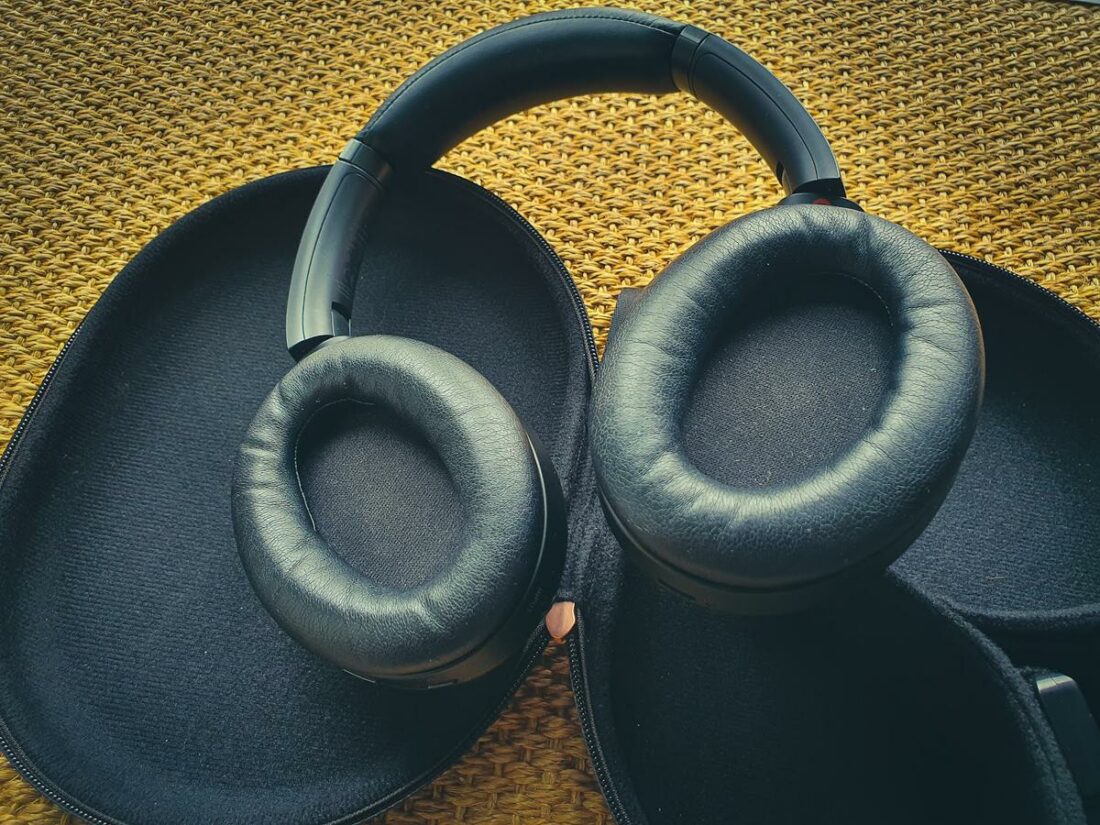
The pads are supple enough to always seal nicely and, even after two years of use, hold their shape pretty well. As with most closed-back headphones, listening in hot summers gets sweaty pretty fast.
Software
Whilst the WH-1000XM3 work fine without it, I highly recommend using Sony’s app (Google and Apple) when using the headphones with smart devices. And immediately comes my first gripe with it – the app is named “Headphones.” Good luck finding it on your crowded app home screen, as the logo is similarly generic.
Usability-wise, the app is more than adequate, if not a bit bloated.
You might have to sit through a lengthy firmware update when it detects your Sony headphones for the first time. It’s using Bluetooth after all, so data transfer rates aren’t exactly stellar.
One useful feature I recommend everyone to try immediately is the noise canceling optimizer. It requires you to have the headphones on and plays a series of signals to determine the seal and adjusts accordingly.
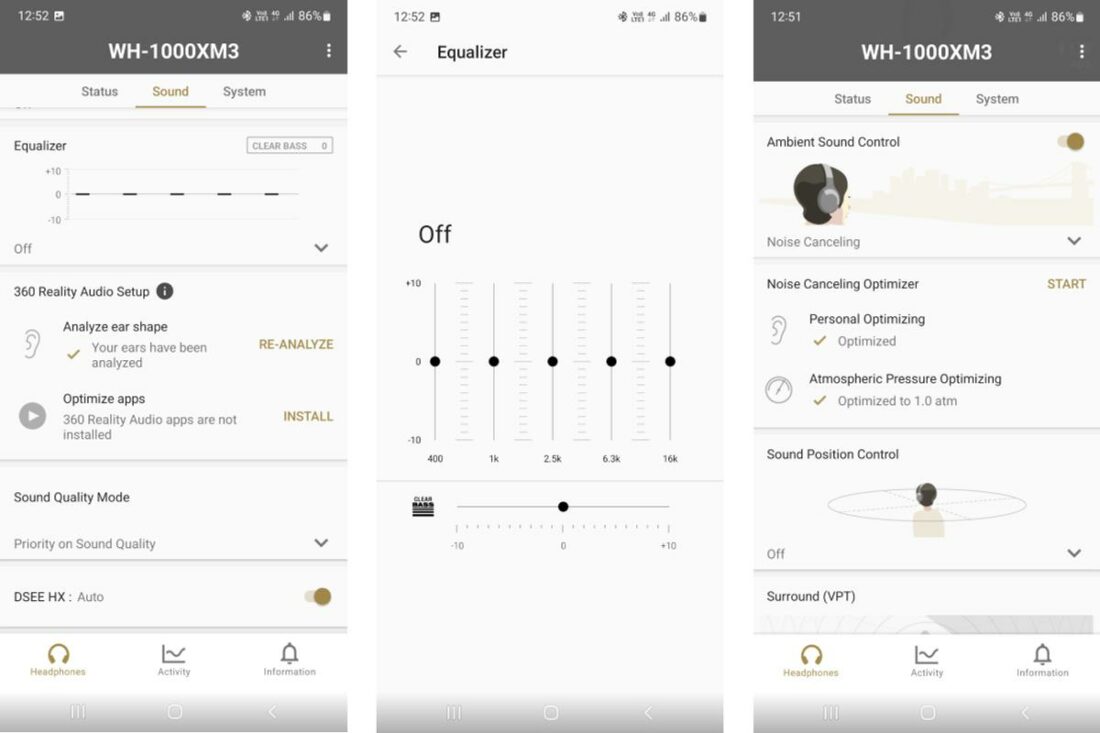
Other sound enhancement features come in the form of EQ and Sony’s proprietary DSEE. I didn’t find the DSEE to make any kind of audible difference.
The EQ is a bit of a joke – only five preset ranges at 400Hz, 1kHz, 2,5kHz, 6.3kHz, and 16kHz with arbitrary +/-10 steps of adjustment. At best, it’s only usable for personal taste tuning and not corrective EQ.
As for other functionality like location-based ANC adjustment and ear scanning for 3D audio, I don’t find them to be worth the hassle. For everyday use, I usually leave the app alone and just use the headphones via the NFC handshake.
Sony WH-1000XM3 Sound Quality
The WH-1000XM3 can be used with the bundled-in cable even with no electronics on. However, it quickly becomes apparent that a large part of their sound is owed to DSP correction, and passive mode is just for when you find yourself stranded with a depleted battery.
The wired active mode was ultimately identical to AptX Bluetooth streaming in all cases but overall latency.
In 2018, when the WH-1000XM3 came out, the ANC performance was nothing short of phenomenal. I markedly remember wearing my pair outside for the first time and walking around in almost complete silence and feeling the vibrations from passing-by traffic with my stomach.
For 2023 the ANC still performs admirably, and I often use the WH-1000XM3 as active earmuffs when I need some peace from the din.
I’ve found one case where the ANC tends to glitch out annoyingly. In public transport, when the automatic doors close, the cabin experiences a slight pressure change. The WH-1000XM3 will try to compensate for the pressure change. If you’re listening to music at that time, the sound will momentarily become Doppler distorted as the membrane makes a huge swing.
The WH-1000XM3 provide a laid-back listening experience, as the overall tuning is dark.
As with all WH1000-series headphones, the low-end boost is very much present and can be an issue for music where mid-frequencies carry most of the relevant information. Mids generally are recessed, with upper mids ordered to stay out of the way. Treble has enough sparkle to bring excitement to most songs, however, don’t expect refinement.
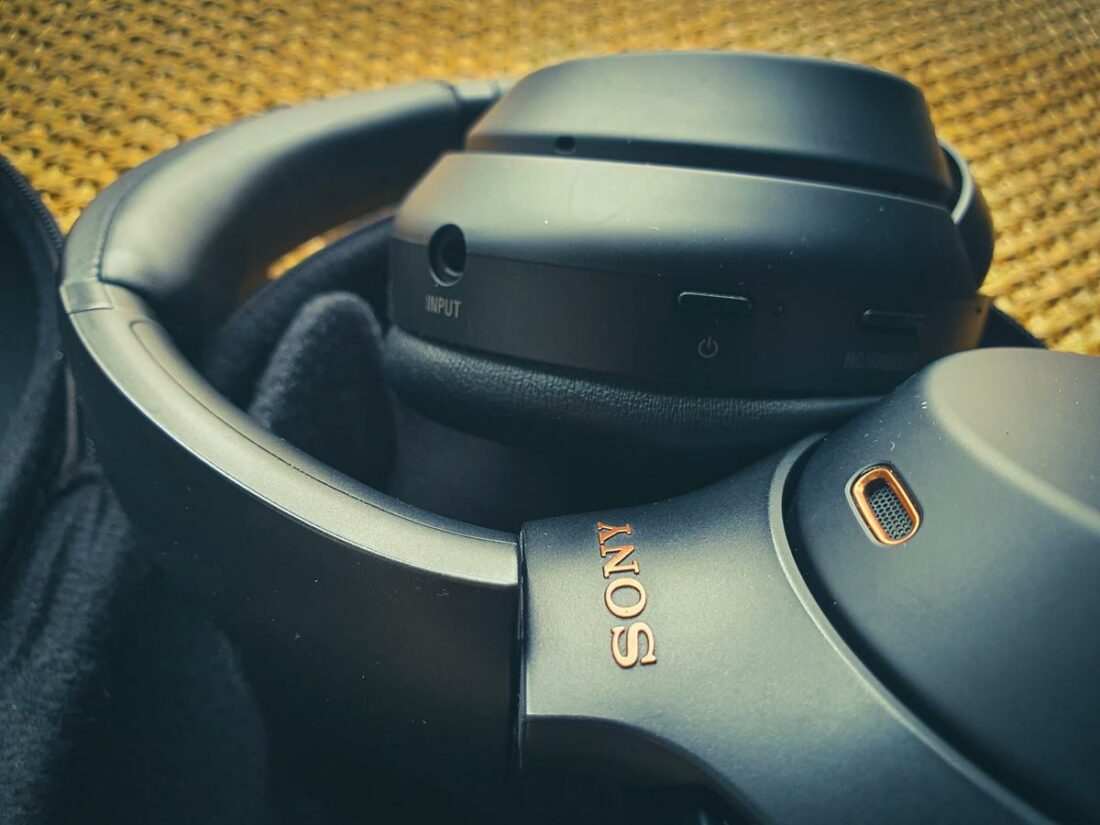
Bass
No way around it, the low end on the WH-1000XM3 is boosted. The increase over most of the midrange is around +10dB, starting at around 150Hz.
Does it bleed into the mids? For sure!
Genres like stoner rock and most of the modern metal with distinct bass lines suffer as lower mids get smothered by the low end. For bass-heavier electronica, it works okay, as the boosted low end gives everything a boomy club vibe.
Technicalities-wise the bass is nothing to write home about – the boost makes much of the low end very one-note, yet decently clear as there is little sign of distortion or noise.
Midrange
The mids are toned down for a more inoffensive, rather than fun, listen. A dip in the upper mids robs distorted guitars, synth, and horns of their bite. Lower mids sound okay enough if there’s little low end in the mix as they’re free to shine through.
I don’t detect any resonances or gross imbalance here – just a misguided effort to play it safe and rob the WH-1000XM3 of some teeth it could use to be more expressive at times.
Treble
Inoffensive is the name of the game in the higher registers. A slight boost can be detected in the sparkle region, which attempts to spice up the overall tonality yet isn’t pronounced enough to make the headphones bright.
Explosive consonants don’t grate as much as they could, which is good for those remote meetings where everyone seems to use the worst mics known to man.
Stage and imaging
Overall projection is decently wide yet very shallow. Phantom sound sources hover at eye distance but can move far to the sides if the recording commands it. There is very little “closed-in” sound coloration that’s found in lower-quality closed-back headphones.
Microphones
The main issue with most ANC headphones mics is that they point the wrong way to capture voice. As someone who has done boom guy work in film sets, I’ll say that for sound, capture positioning is everything, and as humans, we have very little sound coming out of our ears.
This is clearly reflected in the WH-1000XM3 audio capture performance – my voice comes out pretty muffled as high-frequency content is very directional and flies right by the headphones.
In noisy environments, the person talking to me hears a lot of ambient sound, which makes speech comprehension even harder.
If you use the WH-1000XM3 with a laptop for video calls, switching to your laptop’s onboard mics will usually be the better option.
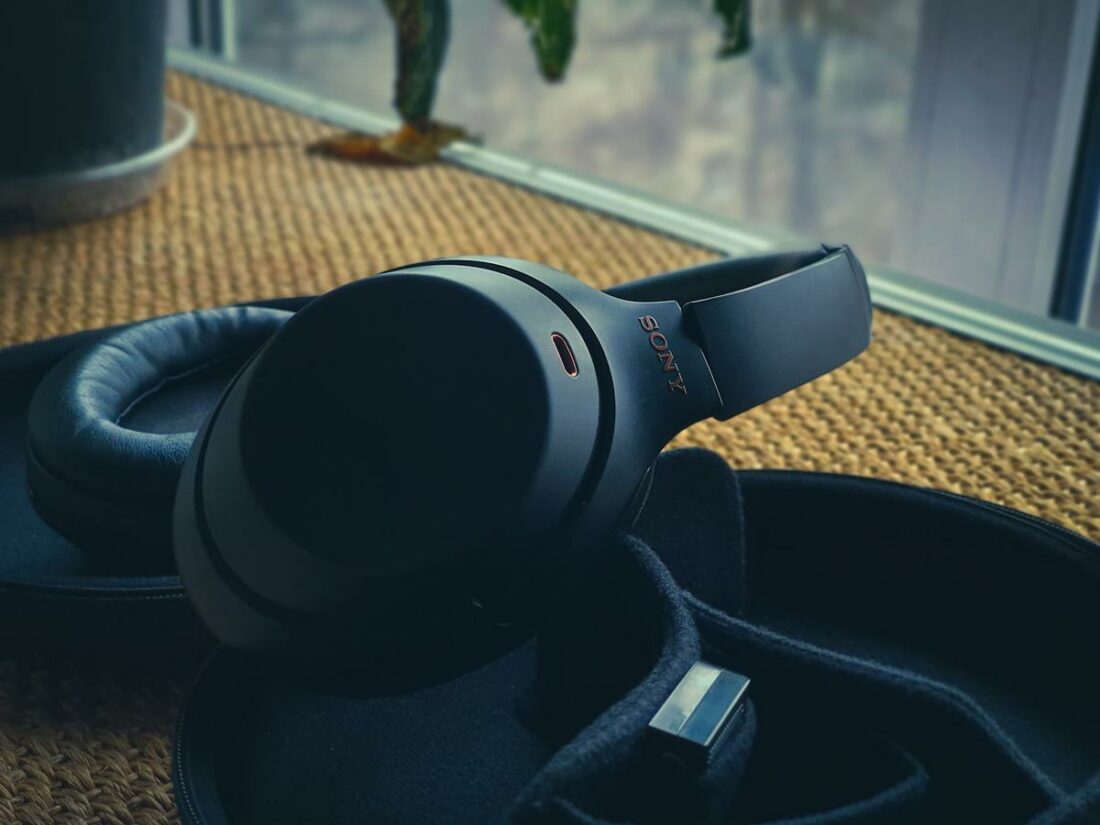
Where to Buy
Conclusion
If found used or heavily discounted under the USD$200 mark, the Sony WH-1000XM3 are a great deal for commuter and office use. Ergonomics-wise, they’re very hard to fault, perhaps except for the touch controls, which can be annoying.
In terms of sound quality, the WH-1000XM3 balance “fun” and “safe.” Hand it to someone new, and they will probably be wowed by the superb ANC more than the musical spectacle.
Bassheads will like them, yet bass connoisseurs should probably look elsewhere as quantity trumps quality here. At the same time, most of the sonic downfalls of the WH-1000XM3 only become apparent when compared to traditional passive headphones, which fall apart where the Sony shines – on streets, airplanes, and noisy offices.
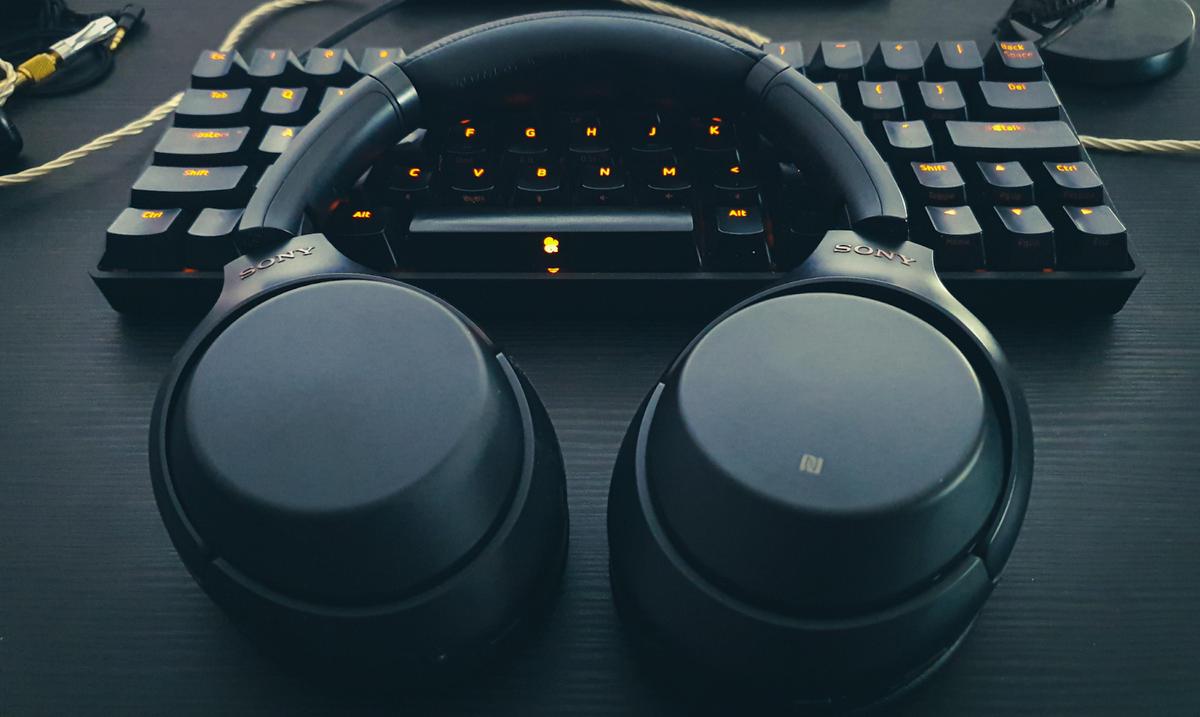
Nice review, thank. The latest and greatest crime in NYC is 2 guys on a scooter driving up behind someone and snatching the AirPods Pro Max off their heads. So I dusted off my WH-1000XM3’s and use them for my commute and walk to work. Just great for podcasts (which are pretty much all in mono) and not so bad for music while I’m reading. The ANC remains as good as anything out here and the battery life is great. Thanks for the update
Thanks, man! With new ANC headphones coming out every year, I just wanted to show people that yesterday’s best can still be a viable choice today. I have reviewed the XM4 (not here) and will say that in terms of sound quality it’s largely the same level as XM3. In many markets Sony used to bundle them together with their smartphones, so there are a lot of XM3 out there which can be snatched for silly money.
Nice return to yesterdays’ kit (that is worthy of buy/use today).
Having read a few reviews here, “cheers”- love the work and efforts given. (Thankyou)
Having enjoyed the Sony noise cancelling (re) investigation, something bears worth mentioning.
A Sony update to the version 3 model broke the microphones from doing their job well.
The new ‘version 4’ model had a different number of microphones and Sony stuffed up the usage of the version 3 microphones…
Basically we lost excellent voice pickup and gained noise that should have been removed.
Clearly this has not been fixed.
Non updated (firmware) versions have exceptional voice pickup and better ANC.
contacting Sony to tell them of the issue, was typically Sony… (ie impossible via five communication portals!)